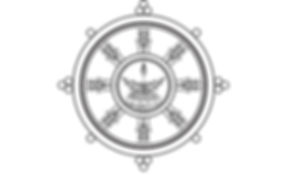
PADMAKARA MULTILINGUAL LEXICON TRANSLATOR'S AREA
term
tibetan
དཀོན་མཆོག་གསུམ
dkon mchog gsum
en:
fr:
pt:
es:
it:
três raros e supremos
sanskrit
त्रिरत्न
triratna
en:
fr:
pt:
es:
it:
três joias
chinese
english
three jewels, three gems
The Buddha, the Dharma and the Saṅgha. [WOMPT, 1998]
Collectively, the object of refuge of all Buddhists. The Buddha, Dharma, and Sangha. [TLWF, 2011][OMS, 2018][NS]
The Triple Gem of Buddha, Dharma, and Sangha; the object of Buddhist refuge. [TPQ, 2010]
The Buddha, Dharma, and Sangha. [NLF, 2005] [ZT, 2006]
The Buddha, the Dharma, and the Spiritual Community (Sangha), in which a Buddhist takes refuge. [LLB, 2002]
The Buddha, the Doctrine (Dharma) and the Assembly of disciples and practitioners (Sangha). These are the three objects of refuge. [TEPTE, 1996]
french
les Trois Joyaux, les Trois Rares et Sublimes*, Trois(Rares et Sublimes)Joyaux, Trois Rares et Suprêmes Joyaux
Le Bouddha, le Dharma et la Sangha. Ces termes ont plusieurs niveaux de sens. Selon l'usage courant, le Bouddha est celui qui montre la voie de la délivrance, le Dharma est son enseignement, et la Sangha est la communauté des pratiquants de la voie. Les Trois Joyaux sont considérés comme le refuge parfait qui protège des souffrances du samsara. [POL, 1999]
le Bouddha, l’Enseignement et la Communauté. Ils sont la base du refuge (voir ce mot). [SC, 2003]
refuge suprême des bouddhistes : « Extérieurement, le Bouddha (ou l’Éveil), le Dharma (les enseignements) et la Sangha (la Communauté) ; intérieurement, le maître (bla ma, guru), le yidam (déité personnelle) et la dakini ; secrètement, le corps absolu, le corps de jouissance et le corps de manifestation. » Cf. Le Chemin de la Grande Perfection (Padmakara, 2e éd., 1997) , p. 225. [PA, 2008]
« extérieurement, le Bouddha, le Dharma et la Saþgha ; intérieurement, le Maître, le Yidam et la Ḍākinī ; secrètement, le corps absolu, le corps de jouissance et le corps d’apparition » (définition tirée du rnam grangs rgya mtsho ). [CGP, 1997]
[TDPQ, 2009]
*CC [LD, 2017][RL, 2010][G-T]
portuguese
Três Joias
Nome ao dado ao conjunto que forma o objeto de refúgio budista: o Buda, o Dharma e a Saṅgha.
Normalmente escrito com letras maiúsculas.
spanish
Tres Joyas
El Buda, el Dharma y la Saṅgha. Tomar refugio en las Tres Joyas marca la entrada en el camino budista y lo distingue como budista.[VI, 2020]
italian
tre gioielli
Buddha, Dharma e Saṅgha.
german
polish
Padmawiki
D2 <TIB>དཀོན་མཆོག་གསུམ་
<SKT> triratna, ratnatraya
<TIB wylie>dkon mchog gsum
Trois Joyaux, Trois Rares et Suprêmes Joyaux.
[TDPQ, 2009]
Three Jewels. The Triple Gem of Buddha, Dharma, and Sangha; the object of Buddhist refuge.
[TPQ, 2010]
---------------------------
<TIB>དཀོན་མཆོག་
<SKT> ratna
<chinese>bǎo 寶
<TIB wylie>dkon mchog
The Sanskrit ratna (lit. “jewel”), used with reference to the Three Jewels (Skt. Triratna, i.e., Buddha, Dharma, and Sangha), was translated into Tibetan as dkon mchog, meaning “rare and supreme.” In the Vajrayana the teacher is often referred to as the Fourth Jewel.
[ZT, 2006, translator's notes]

![pk-logo vermelho [SITE].jpg](https://static.wixstatic.com/media/58395e_1acbaae3ed6a44838dde5483f388f035~mv2.jpg/v1/fill/w_94,h_94,al_c,q_80,usm_0.66_1.00_0.01,enc_auto/pk-logo%20vermelho%20%5BSITE%5D.jpg)